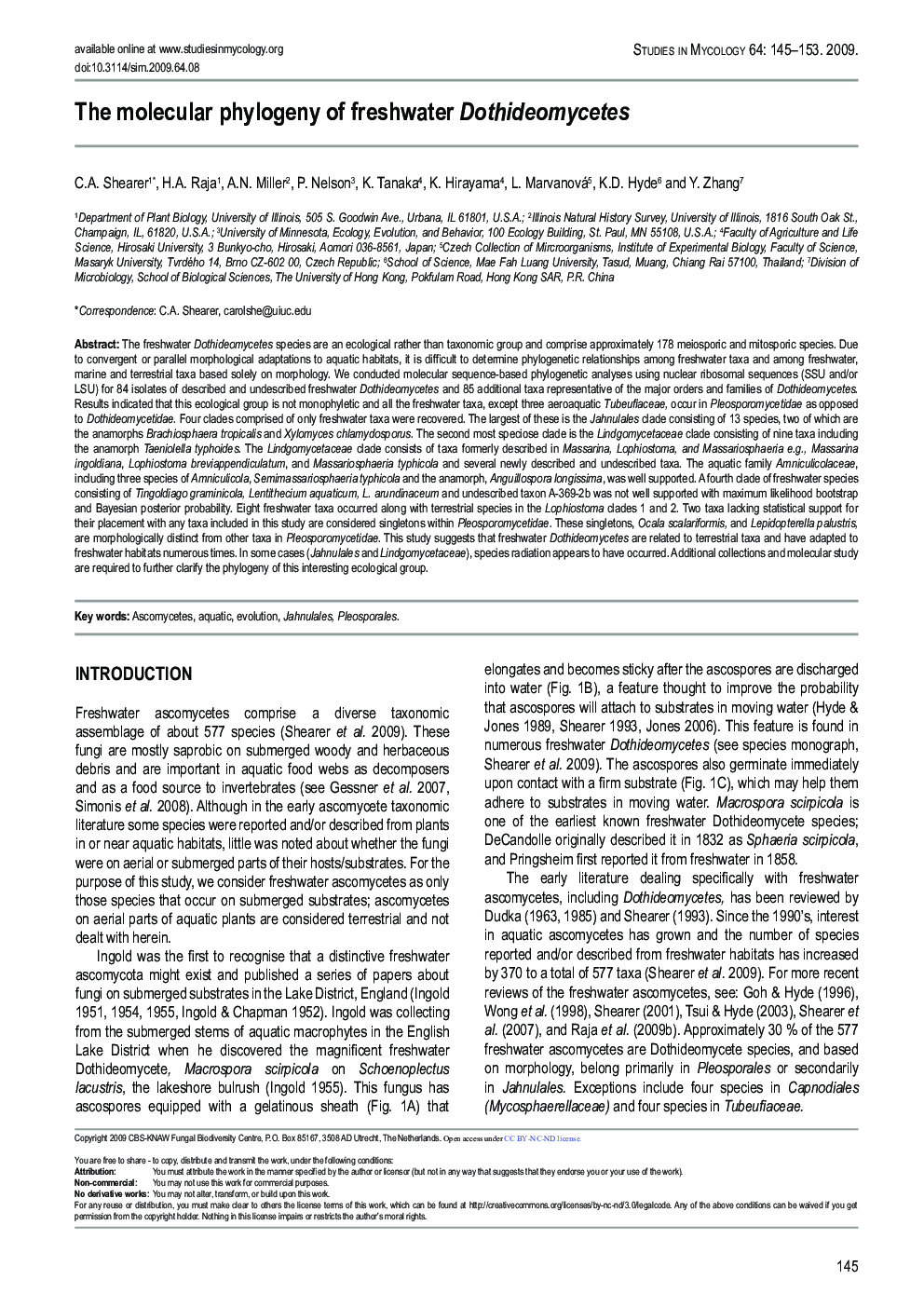| Article ID | Journal | Published Year | Pages | File Type |
|---|---|---|---|---|
| 4370795 | Studies in Mycology | 2009 | 9 Pages |
The freshwater Dothideomycetes species are an ecological rather than taxonomic group and comprise approximately 178 meiosporic and mitosporic species. Due to convergent or parallel morphological adaptations to aquatic habitats, it is difficult to determine phylogenetic relationships among freshwater taxa and among freshwater, marine and terrestrial taxa based solely on morphology. We conducted molecular sequence-based phylogenetic analyses using nuclear ribosomal sequences (SSU and/or LSU) for 84 isolates of described and undescribed freshwater Dothideomycetes and 85 additional taxa representative of the major orders and families of Dothideomycetes. Results indicated that this ecological group is not monophyletic and all the freshwater taxa, except three aeroaquatic Tubeufiaceae, occur in Pleosporomycetidae as opposed to Dothideomycetidae. Four clades comprised of only freshwater taxa were recovered. The largest of these is the Jahnulales clade consisting of 13 species, two of which are the anamorphs Brachiosphaera tropicalis and Xylomyces chlamydosporus. The second most speciose clade is the Lindgomycetaceae clade consisting of nine taxa including the anamorph Taeniolella typhoides. The Lindgomycetaceae clade consists of taxa formerly described in Massarina, Lophiostoma, and Massariosphaeria e.g., Massarina ingoldiana, Lophiostoma breviappendiculatum, and Massariosphaeria typhicola and several newly described and undescribed taxa. The aquatic family Amniculicolaceae, including three species of Amniculicola, Semimassariosphaeria typhicola and the anamorph, Anguillospora longissima, was well supported. A fourth clade of freshwater species consisting of Tingoldiago graminicola, Lentithecium aquaticum, L. arundinaceum and undescribed taxon A-369-2b was not well supported with maximum likelihood bootstrap and Bayesian posterior probability. Eight freshwater taxa occurred along with terrestrial species in the Lophiostoma clades 1 and 2. Two taxa lacking statistical support for their placement with any taxa included in this study are considered singletons within Pleosporomycetidae. These singletons, Ocala scalariformis, and Lepidopterella palustris, are morphologically distinct from other taxa in Pleosporomycetidae. This study suggests that freshwater Dothideomycetes are related to terrestrial taxa and have adapted to freshwater habitats numerous times. In some cases (Jahnulales and Lindgomycetaceae), species radiation appears to have occurred. Additional collections and molecular study are required to further clarify the phylogeny of this interesting ecological group.
